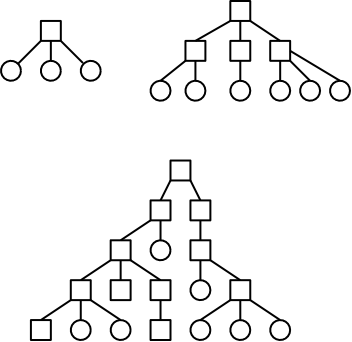Single Level Directory Program In C


I have a job that runs every night to pull xml files from a directory that has over 20,000 subfolders under the root. Here is what the structure looks like: rootFolder/someFolder/someSubFolder/xml/myFile.xml rootFolder/someFolder/someSubFolder1/xml/myFile1.xml rootFolder/someFolder/someSubFolderN/xml/myFile2.xml rootFolder/someFolder1 rootFolder/someFolderN So looking at the above, the structure is always the same - a root folder, then two subfolders, then an xml directory, and then the xml file. Only the name of the rootFolder and the xml directory are known to me. The code below traverses through all the directories and is extremely slow. Any recommendations on how I can optimize the search especially if the directory structure is known?
The following code snippet will search a directory structure and find ALL 'xml' folders inside the entire directory tree. String startPath = @'C. Same level as the. How can I create directory tree in C++/Linux? Then I hacked the test program to fork 20 times and. Is it possible to make multi-level directory using.
String[] files = Directory.GetFiles(@' somenetworkpath rootFolder', '*.xml', SearchOption. Echometer Model D Manual Lymphatic Drainage on this page. AllDirectories). Rather than doing GetFiles and doing a brute force search you could most likely use GetDirectories, first to get a list of the 'First sub folder', loop through those directories, then repeat the process for the sub folder, looping through them, lastly look for the xml folder, and finally searching for.xml files. Now, as for performance the speed of this will vary, but searching for directories first, THEN getting to files should help a lot! Update Ok, I did a quick bit of testing and you can actually optimize it much further than I thought.
Bach Invenzione A Due Voci Pdf To Jpg on this page. The following code snippet will search a directory structure and find ALL 'xml' folders inside the entire directory tree. String startPath = @'C: Testing Testing bin Debug'; string[] oDirectories = Directory.GetDirectories(startPath, 'xml', SearchOption.AllDirectories); Console.WriteLine(oDirectories.Length.ToString()); foreach (string oCurrent in oDirectories) Console.WriteLine(oCurrent); Console.ReadLine(); If you drop that into a test console app you will see it output the results. Now, once you have this, just look in each of the found directories for you.xml files.
The directory structure is the organization of files into a hierarchy of folders. In a single-level directory system, all the files are placed in one directory.
There is a root directory which has all files. It has a simple architectureand there are no sub directories. Advantage of single level directory system is that it is easy to find a file in thedirectory. In the two-level directory system, each user has own user file directory (UFD). The system maintains a master block that has one entry for each user. This master block contains the addresses of the directory of the users.
When a user job starts or a user logs in, the system's master file directory (MFD) is searched. When a user refers to a particular file, only his own UFD is searched.
This effectively solves the name collision problem and isolates users from one another. Hierarchical directory structure allows users to create their own subdirectories and to organize their files accordingly.
A tree is the most common directory structure. The tree has a root directory, and every file in the system has a unique path name. A directory (or subdirectory) contains a set of files or subdirectories.